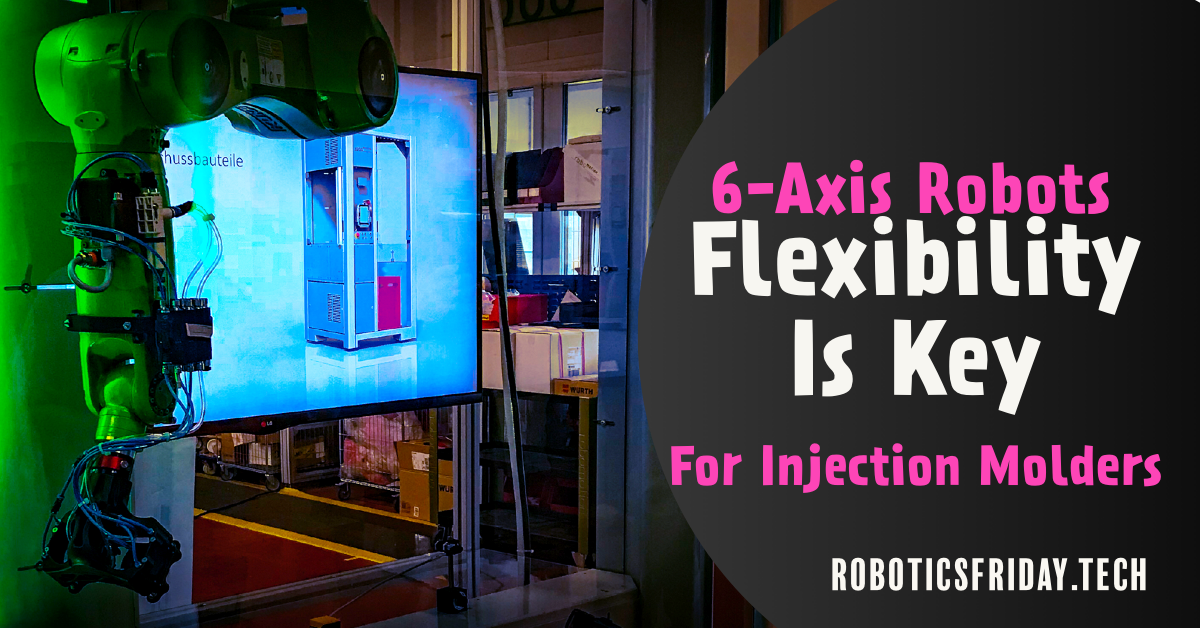Did I mention that I once worked for a mold maker who also produced specialized linear robots for a process called in mold labeling (IML)? It’s a methodology to decorate thin-walled plastic parts by basically placing a decoration directly in the cavity of mold. Then you inject plastic behind it which literally melts the label to the part. This way you can achieve a very high quality of decoration for your parts. Parts and labels cannot be taken apart.
In-Mould Labeling: Thin Walls at High Speed
This process is widely used in packaging, for example for yoghurt cups. But you also find it in automotive industry. For instance, you can decorate parts with a carbon look. When I remember right, a typical mold producing yoghurt cups consisted of 6 to 8 cavities and the cycle time was around 3 to 4 seconds – and that was already like 9 years ago.
The first time I stood beside such a linear robot taking out the parts from the mold and placing the labels into the cavities, I was shocked when I saw the speed of the machine (and of the IMM).
For such an application there is no better solution than a specialized linear robot.
IMM: Linear or 6-Axis Robots?
But is this always true when we are talking plastics? Linear robots are ubiquitous when it comes to injection molding machines. They are simple to program. Often they can be purchased from the IMM producer directly. They are typically fully integrated into the control and hence the HMI of the IMM. Last but not least, they seem to be less costly.
The question is: are linear robots the automation solution to go for if you want to automate your IMM? Compared to six-axis robots they have some downsides, too. They tend to need a lot of space (especially regarding the required clearance) and they are not flexible when it comes to using them in another machine tomorrow. Also due to the lack of flexibility they are more or less bound to do a simple job (unloading of the IMM).
Benefits of 6-Axis Robots for Injection Molders
6-Axis Robots on the other hand can be used to add additional value to your process chain. They can be used for inline quality inspection, for additional assembly steps or for welding operations to name a few. The following video shows a complex medical application – before showing a very flexible solution.
For SMCs’ Flexibility is Key
If I had an injection molding machine in my garage (as many people start their business by the way), I would go for the most flexible way to automate it like the flexobot from robomotion.
I my opinion this is a very clever solution, especially for SMCs’ as it can be modified very quick so that you can use it for different applications. It can be brought from one machine to another within less than an hour. And as it has a simplified HMI, this changeover can also be done by workers with less robot experience.
As usual, there is no universal answer to the question which is the best automation solution for your injection molding machine. It all comes down to your application, your environment, your processes. It makes sense to develop your automation strategy together with a partner, especially if you haven’t developed any experience with 6-Axis Robots on your shop floor yet.
If you found this article helpful, I’ll appreciate if you leave a comment below. Tell me about your experience with 6-Axis Robots and IMMs. Leave a like and subscribe and if you need support in developing your automation strategy feel free to DM me.


